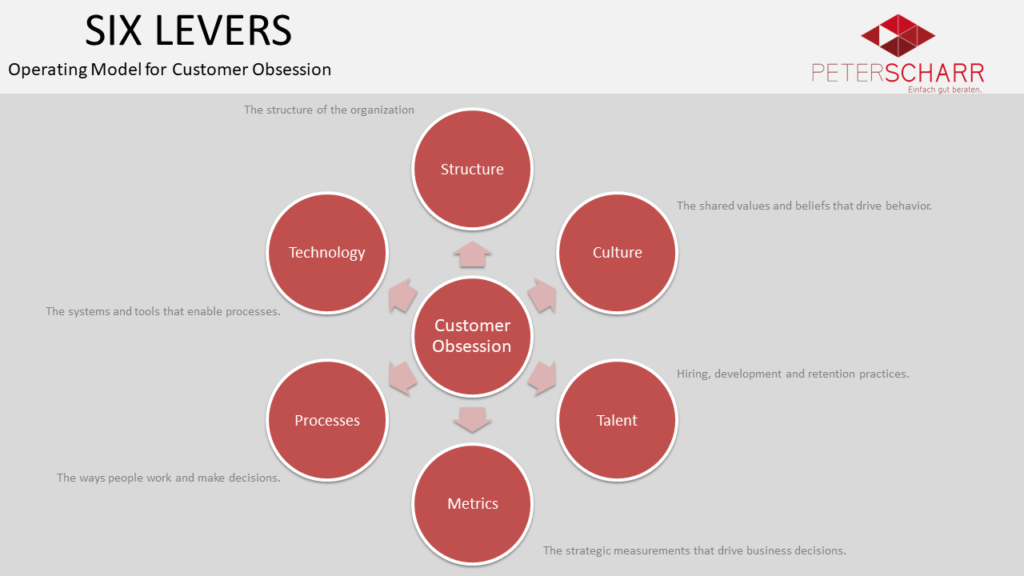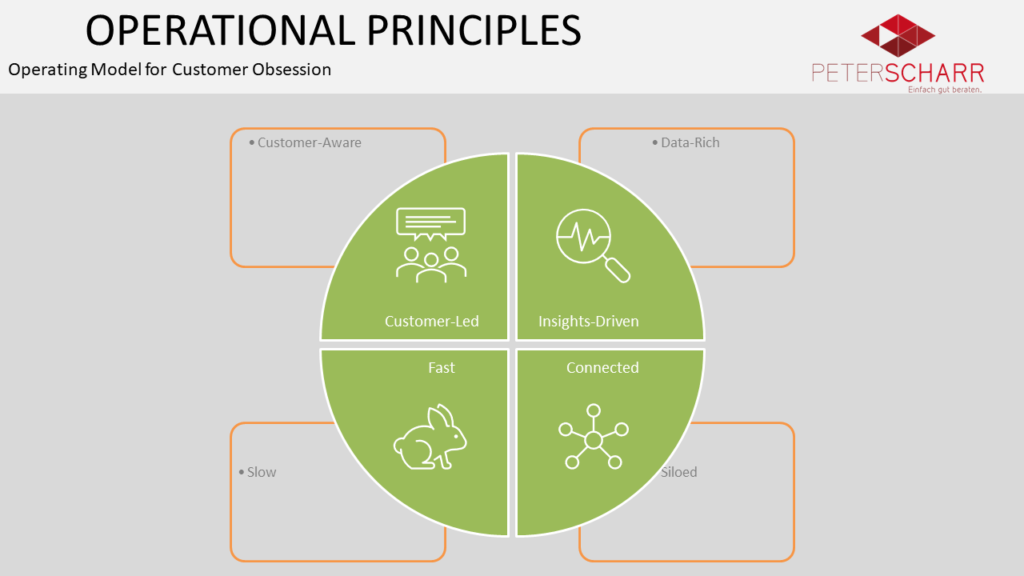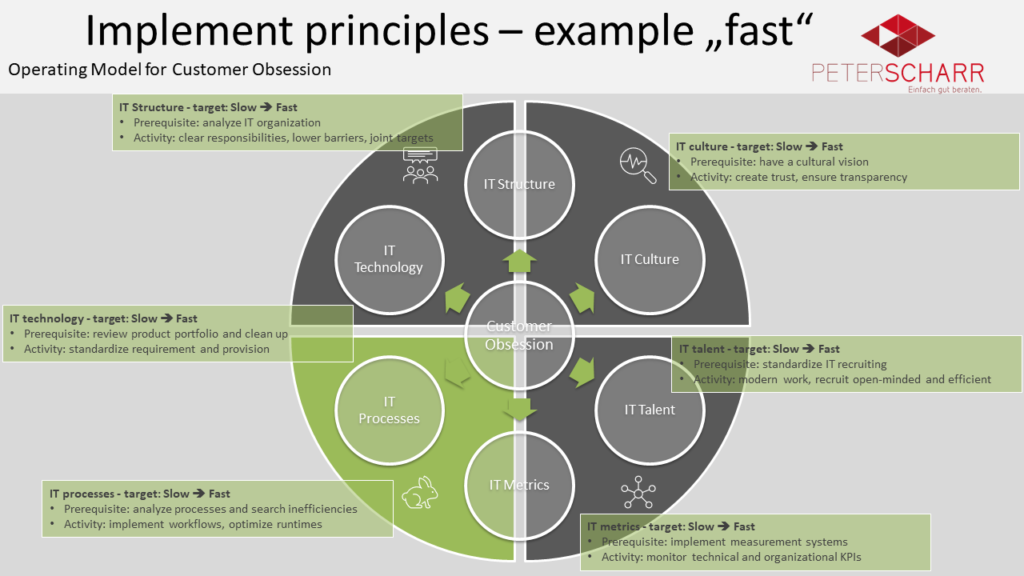In 2015, Sharyn Leaver (Forrester) published a widely acclaimed report on how a business organization could better align itself with the customer. The measures suggested there by no means have to be limited to entire companies.
Do you have it in smaller ones?
Some of the principles can certainly be applied to more specific „customer-supplier relationships,“ such as the interaction between departments of companies. The most common reading of service delivery to „customers“ within a company concerns that of the ‚indirect‘ (i.e., non-value-added) divisions to the ‚direct‘ divisions.
Here, of course, it makes sense to turn to IT, because with the help of clearly defined service certificates and SLAs, documented service provision processes, standardized communication paths and internal service charging, many standardization steps have already been taken here – steps that are based on the relationships between companies. For the role of the customer, of course, internal customers come into consideration here, which are normally the specialist departments. But of course this principle can also be applied in a generalized way to an IT service provider that provides a large proportion of its services to external customers.
So how could the Forrester concept be implemented in IT?
The perspectives
Forrester first describes six areas of activity in which the organization can be aligned with the customer.

These can be mapped quite easily using the example of an IT environment:
- the organizational structure describes the organization of the IT area, i.e. its functions (activities) and roles (activity owners)
- the culture of the organization is – since people work here – naturally also to be found in IT
- Talent management practices are also – and especially – crucial in IT for internal „sourcing“ (staffing)
- Metrics are also obtained in IT from operational data that are incorporated into tactical and strategic decisions
- Processes as a counterpart to the organizational structure are often very well documented and standardized, especially in this area (thanks to ISO and ITIL).
- Technology as an execution platform naturally has a very central role in IT
So far so good, it seems that all activities of the ‚operating model for customer obsession‘ can also be found in IT. But what exactly do we do with them now?
The four horseman
We put four operational principles into these activity areas, and measure to what extent they meet these principles. The greater the deviation, the greater the need for action.

In very general terms, then, the goal is to move from an ineffective current state to an optimized target state. This path includes:
- not only perceiving customers, but also clearly aligning activities with customer benefits
- not only collecting data, but also interpreting it conclusively and acting according to the findings
- not looking for the perfect (unachievable) solution, but striving for an improvement that can be implemented quickly
- not to delimit, but to integrate
Regardless of the very different orientations of the areas of activity, we can easily apply the four principles here. They are generic enough for this purpose. So now we need to align the six levers described with the four principles. At first, this sounds terribly abstract, but it can be mapped onto concrete actions comparatively quickly, as illustrated here by the example of „Fast“:

The rocky road
Once you have determined the appropriate actions for each of the levers needed to achieve the target principles, you have already taken the most important steps. Now you need to evaluate them in terms of time and money, and put them in a prioritized order. Of course, here too, the journey is the destination. It is not necessary to implement every principle 100% in every area to create an organization that serves the customer. However, a good dose of „customer focus“ has not hurt many delivery areas.
Like any transfer of a principle to a new subject, this one naturally wobbles a bit. Nevertheless, valuable insights can be gained for one’s own area. After all, the question is really on every manager’s mind – and hopefully on a regular basis – what part of my employees‘ output really benefits the customer?
If you can think yourself into this structure, it provides valuable impetus to check your own organization for customer compatibility. The question of whether obsessive customers really have to be the result is, of course, up to each CIO.
As always, good luck with the answer,


